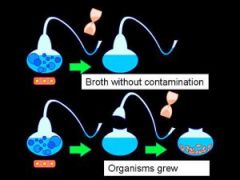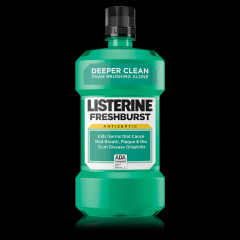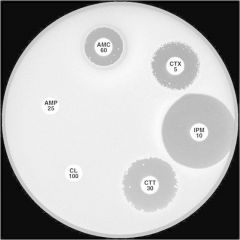![]()
![]()
![]()
Use LEFT and RIGHT arrow keys to navigate between flashcards;
Use UP and DOWN arrow keys to flip the card;
H to show hint;
A reads text to speech;
9 Cards in this Set
- Front
- Back
|
AntonVon Leeuwenhoek 1632-1723 |
•a Dutch linen merchant whose fascination with the grinding of lenses led him to anew world, the world of microbes •he called these microbes, animalcules •he kept meticulous records and drawing •he wrote over 400 letters to the Royal Society of Physicians in England The impact of his findings were not realized until years after his death |
|
|
Edward Jenner 1798 |
-was the first to use cowpox blister fluid to protect against smallpox |
|
|
Louis Pasteur 1822-1885 |

-a French biochemist first hired to determine why wine would rot in the barrels -determined that microbes in air were responsible for rotting -disproved spontaneous generation with swan neck flask experiment -developed first vaccine for rabies -identified numerous pathogens to man and animals (germ theory) Pasteur Institute in Paris is a thriving research institute today. |
|
|
Robert Koch 1843-1910 |
-German physician who studied anthrax -found the causative agent of anthrax, Bacillus anthrasis -developed Koch’s Postulateto determine the causative agent of disease (theory) -became director of the Berlin Institute 1843 -1910 Incidentally,he taught the first course in microbiology. |
|
|
Ignaz Philipp Semmelweis 1818-1865 |

-as a young physician he noticed that woman whose babies were born in the hospital with the assistance of physicians were more likely to die, than those babies delivered in the same hospital by midwives -connected child bed fever with an infection that led to the death of a pathologist - Suggested hand washing so that Doctors did not transfer microbes from a dead patient to a newborn child |
|
|
Joseph Lister1827-1912 |

- a surgeon impressed with the work of Pasteur accepted the theory that pathogens were in the air -began a practice that became know as aseptic technique -used carbolic acid (phenol) to disinfect hands, patient’s body and surgical instruments -observed a drastic reduction in the incidence of post-surgical infection |
|
|
Paul Ehrlich 1845-1915 |

-physician-chemist who was the first to use chemicals to fight an infectious disease tried to find the magic bullet -used arsenic-containing compound to fight syphilis and related diseases -the chemicals worked but showed adverse side effects Coined term chemotherapy. |
|
|
Sir Alexander Fleming |

-in 1917 he noticed, on a culture of Staphylococcus aureus,that there was a zone of inhibition around a Penicillium notatum contaminant -this was the first time that one organism was shown to produce an inhibitory substance for another microbe |
|
|
Koch's Postulates |
Four criteria that were established by Robert Koch to identify the causative agent of a particular disease, these include: 1. the microorganism or other pathogen must be present in all cases of the disease 2. the pathogen can be isolated from the diseased host and grown in pure culture 3. the pathogen from the pure culture must cause the disease when inoculated into a healthy, susceptible laboratory animal 4. the pathogen must be re-isolated from the new host and shown to be the same as the originally inoculated pathogen |

